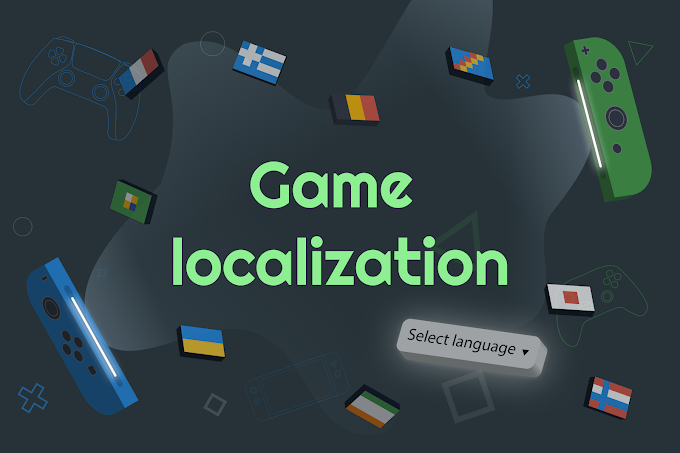In an era when video games have become a global phenomenon, transcending borders and languages, the importance of game localization solutions cannot be overstated. Game localization is the process of adapting video games for different regions and cultures, ensuring that players worldwide can enjoy the same immersive experience. However, this seemingly straightforward task is fraught with challenges, ranging from linguistic and cultural barriers to complex technical issues. In this article, we will delve into the intricate world of game localization, exploring the hurdles that localization teams face and the strategies they employ to overcome them.
The Global Gaming Landscape
Before delving into the challenges of game localization, let’s first understand why it’s crucial. The gaming industry has witnessed unprecedented growth in recent years, with a global market that is estimated to be worth over $159 billion as of 2021. A significant part of this success can be attributed to the industry’s ability to reach a diverse audience across the world. Video games are no longer confined to a single language or culture; they are a global medium of entertainment.
To cater to this vast and diverse audience, game developers must ensure that their products are accessible and engaging for players from different linguistic and cultural backgrounds. This is where game localization comes into play. It is the bridge that allows a game developed in one part of the world to be enjoyed by players in another. However, building this bridge is far from straightforward, as it involves overcoming a multitude of challenges.
Linguistic Challenges
- Translation Accuracy: The most fundamental aspect of game localization is translating the game’s text and dialogues into the target language. While this may seem like a simple task, maintaining accuracy and ensuring that the translation captures the nuances of the original language can be incredibly challenging. Wordplay, cultural references, and idiomatic expressions often do not have direct equivalents in other languages.
- Voice Acting: Many games feature voice acting to bring characters to life. Finding talented voice actors who can convey the emotions and personalities of the characters while speaking fluently in the target language is a significant challenge. Lip-syncing the characters’ movements with the translated dialogue is another hurdle.
- Text Expansion: Languages vary in word length and structure. Translating text from a language with concise sentences to one with longer ones can lead to layout and design issues. Conversely, translating from a language with longer sentences to a more concise one may require rewriting and adaptation.
- Language Direction: Some languages are written from right to left (e.g., Arabic and Hebrew), while others are written from left to right. This difference affects not only the text but also the overall game layout and user interface.
Cultural Challenges
- Cultural Sensitivity: What may be culturally acceptable or humorous in one region can be offensive or confusing in another. Game localization companies must navigate cultural sensitivities and adapt content accordingly to avoid controversies and ensure a positive player experience.
- Local Preferences: Different regions have unique preferences when it comes to gameplay, aesthetics, and storytelling. A game’s success may depend on how well it aligns with these preferences. For example, a game popular in Japan may require significant adjustments to resonate with Western audiences.
- Age Ratings and Content Restrictions: Various countries have different regulations and age rating systems for video games. Content that is suitable for one region may require modifications to meet the requirements of another, adding complexity to the localization process.
Technical Challenges
- Character Encoding: Different languages use different character sets and encoding standards. Ensuring that the game can display characters from various languages without issues like garbled text or font compatibility problems is a technical challenge.
- User Interface Adaptation: Localizing the user interface (UI) to fit the target language often involves adjusting button labels, menus, and navigation. This can be particularly challenging in games with complex UIs.
- Testing and Quality Assurance: Rigorous testing is essential to identify and rectify issues related to localization. This includes checking for text overflow, linguistic errors, and ensuring that all translated content fits seamlessly within the game.
Strategies for Overcoming Localization Challenges
Game developers and localization teams employ several strategies to overcome these challenges and ensure successful game localization:
- Early Planning: Localization should be considered from the game’s early development stages. This allows for better integration of localization efforts and avoids last-minute issues.
- Collaboration: Close collaboration between developers, writers, and localization teams is crucial for addressing linguistic and cultural challenges effectively.
- Cultural Consultation: Employing cultural consultants or experts from the target region can help ensure cultural accuracy and sensitivity in the game’s content.
- Use of Localization Tools: Advanced localization tools and software assist in managing the translation process, tracking changes, and maintaining consistency across the game.
- User Feedback: Gathering feedback from players in different regions can provide valuable insights into the success of localization efforts and help identify areas for improvement.
- Continuous Updates: Games are often updated with new content and patches. Localization efforts should be ongoing to ensure that all new content is also adapted for the target audience.
Conclusion
Game localization solutions is a multifaceted endeavor that involves navigating linguistic, cultural, and technical barriers. In an increasingly globalized gaming industry, addressing these challenges is not just a matter of convenience; it’s a business imperative. Successfully localizing a game allows
developers to tap into new markets, broaden their player base, and create a more inclusive gaming experience for players worldwide.
The challenges discussed in this article are by no means exhaustive, as the world of game localization is dynamic and ever-evolving. As technology advances and games become more complex, localization will continue to be a vital aspect of the gaming industry. The key to overcoming these challenges lies in careful planning, cultural sensitivity, and a commitment to delivering high-quality, culturally relevant gaming experiences to players around the globe. By navigating these hurdles, developers can ensure that their games transcend linguistic and cultural boundaries, bringing joy and entertainment to players of all backgrounds.
Author: Muthamilselvan is a passionate Content Marketer and SEO Analyst. He has 8 years of hands-on experience in Digital Marketing with IT and Service sectors. Helped increase online visibility and sales/leads over the years consistently with my extensive and updated knowledge of SEO. Have worked on both Service based and product-oriented websites.




